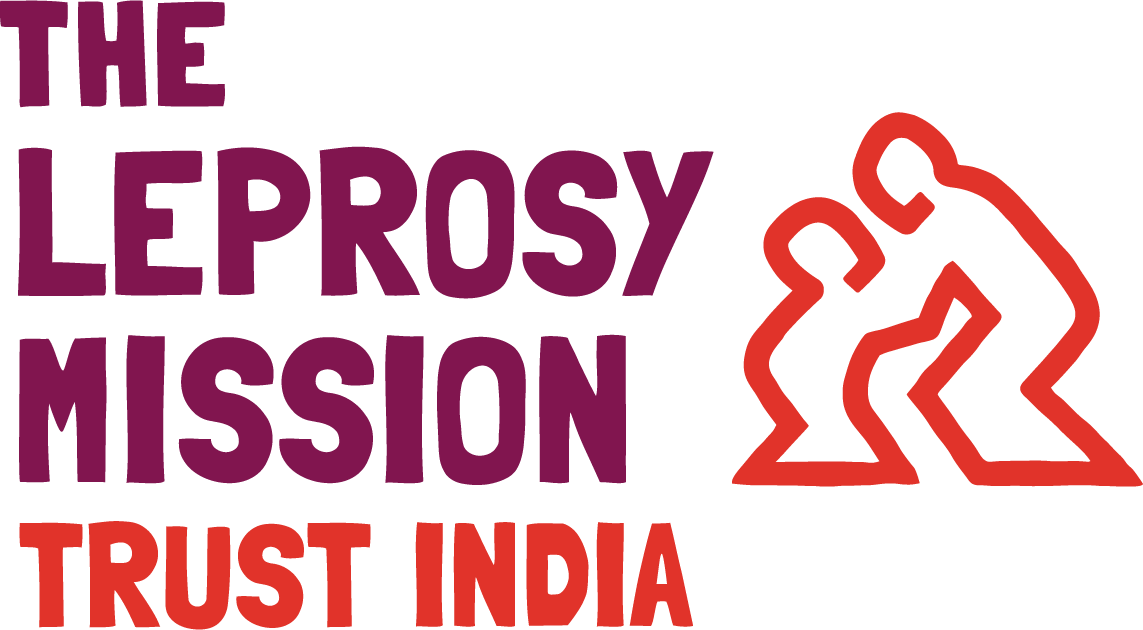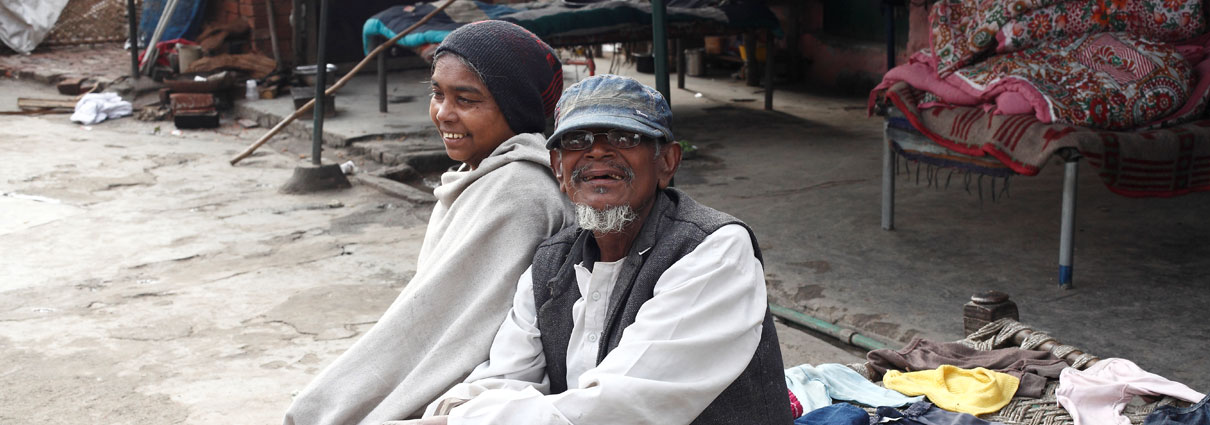Leprosy – Social Aspects
There is an age-old stigma attached to leprosy, and because of this, society maintains negative feelings toward people affected by the disease. They are ostracised by society and live sub-human lives. They are subjected to social and legal discrimination which rob them of their human rights.
Stigma and discrimination in leprosy
Since ancient times, society has stigmatised people affected by leprosy. There is a strong feeling in the society that being infected with leprosy is shameful, and because of this, patients, even after they are cured, are not accepted in the society.
What is Stigma?
Coalition for Elimination of AIDS-related Stigma (CEAS) in its website, defines stigma as a degrading and debasing attitude of the society that discredits a person or a group because of an attribute (such as an illness, deformity, colour, nationality, religion, etc). Stigma destroys a person’s dignity, marginalises affected individuals, violates basic human rights, markedly diminishes the chances of a stigmatised person of achieving full potential, and seriously hampers pursuit of happiness and contentment.
Even today, when leprosy is curable, the age-old stigma attached to it has not been cured. Stigma is a reality in the lives of the people affected by leprosy, and this hampers their physical, psychological, social and economical well-being.
Lack of knowledge and information, age-old beliefs, fear and shame, have resulted in the stigma of leprosy. Stigma in leprosy leads to irrational behaviour towards people affected by the disease. It is hurtful, and leads to discriminatory practices. Many still believe leprosy results from a divine curse. People with the disease are avoided as they are seen as sinful, and those around them do not want to incur god’s wrath. Even now, leprosy strikes fear in the minds of people as a disfiguring, contagious and incurable disease – the result of divine punishment for sins. And the society continues to stigmatise and discriminate against people affected by the disease.
Religious perspectives on leprosy:
-
- In Hinduism, the Manu Smriti (circa 1500 BC) states that if there is leprosy in a family, one should not have any matrimonial alliances with that family.
- In Christianity, the Holy Bible has several references (especially the Book of Leviticus, chapter 13) that leprosy is a divine punishment for sins.
- Islam commands the faithful to “Flee from the ‘leper’ as you would flee from a lion,” as leprosy is a serious disease that is transmitted quickly and kills the one who catches it.
- Buddhists call leprosy a ‘karmic’ disease (A karmic disease is considered a punishment for sins in one’s past lives).
Since a cure for leprosy was not available in the past, contracting leprosy meant a life of disability and disfigurement, and living in isolation and disgrace. Even educated people became victims of the misconceptions about leprosy. The classic image of a person with bandages and a disfigured body, begging for livelihood reinforces this belief of physical uncleanness and moral impurity, thus justifying the ostracism and discrimination.
Social discrimination
The stigma attached to leprosy is so acute that persons affected by the disease, in many cases, are forced to leave their homes and live in isolated colonies. Even those who live within society are often excluded from participating in the mainstream society. They are often ostracised and prevented from accessing community resources, like water from community wells, and are excluded from festivals and community gatherings. They are denied education, employment and often lose the freedom to marry a ‘normal’ person. Fear of stigma and discrimination stop people with leprosy seeking medical treatment. They sometimes even face discrimination at the hands of health workers and medical practitioners who are ignorant and uninformed.
The stigma and discrimination extends to the family well. Members are treated in a similar way and not allowed to participate in the society. So, many families reject the person affected by leprosy for fear of exclusion, thus leaving them without family, home and social support networks.
Because of stigma and discrimination, people affected by leprosy often experience loss of self-esteem and dignity, and feel fear, shame, hopelessness and guilt. Leprosy, like other infectious diseases often affects the poorest and the most marginalised communities who already have a history of being discriminated against. They have a limited capacity to defend their rights and challenge stigma.
Discrimination under the law
People affected by leprosy also face discrimination before the law in many parts of the world. We have identified 119 civil and criminal laws discriminatory towards people affected by leprosy. These laws were framed on the basis of the ‘Lepers Act, 1898’ (which was repealed by the Parliament of India on April 27, 2016). These laws continue to discriminate against people affected by leprosy. They allow leprosy as a ground for divorce, discriminate against people affected by the disease who resort to begging for livelihood, bar them from contesting elections, charge higher life insurance premium from them, stop them from using public transport, obtain driving licences, etc. These laws violate their human rights – like the right to participate in political life, right to marriage and family life, right to employment, right to inclusion, and right to freedom of movement. They deny the fundamental right to equality before the law, guaranteed by the Constitution of India, under Article 14. These laws are also a denial of the right to equality, guaranteed by the Universal Declaration of Human Rights, 1948, vide Article 7.
As a result of the advocacy done by NGOs working in the field of leprosy, the Law Commission of India studied this matter and submitted its report (Report 256 – Eliminating Discrimination against Persons Affected by Leprosy) to the Ministry of Law and Justice, Government of India, in April 2015. This report recommends steps for rehabilitation of people affected by leprosy and has draft legislation, titled ‘Eliminating Discrimination against Persons Affected by Leprosy (EDPAL) Bill, 2015’ for repealing laws discriminatory towards people affected by leprosy.
Myths and facts about leprosy
We have discovered the bacterium that causes leprosy, and we have an effective cure for the disease. It is intriguing that leprosy is still riddled with myths and misconceptions.
It is high time we embraced the facts about leprosy and rejected the myths. Watch our video, Fight fear with facts – seven leprosy myths busted, to know some of the basic facts about leprosy
Is it right to use the word ‘leper’?
The word ’leper’ is a derogatory word which reinforces the already strong stigma attached to leprosy. It is a merciless label stamped on a person who is already experiencing ostracisation due to the stigma attached to leprosy. The ‘L-word’, as it is often called, degrades and dehumanises, and is associated with someone who is an outcast.
Attributing derogatory connotations to terms to humiliate people
In the course of the evolution of communication, we have started using the word ‘leper’ to show our contempt for a person. A person who is shunned by others for moral or social reasons is disparagingly called a ‘leper’. (Merriam-Webster dictionary gives this example to corroborate the derogatory connotation of the word ‘leper’: ‘a convicted child molester who is treated as a ‘leper’ wherever he goes’).
The world community is unanimous against the use of the term ‘leper’, and has called for action to remove the term from everyday use:
- The United Nations, in its Resolution A/HRC/15/30 (Principles and guidelines for the elimination of discrimination against persons affected by leprosy and their family members), under point 9 (of the Guidelines) has mentioned: “States should remove discriminatory language, including the derogatory use of the word ‘leper’, or its equivalent in any language or dialect from government publications… “.
- The World Health Organisation (WHO), in its ‘Guidelines for strengthening participation of persons affected by leprosy in leprosy services ’ discusses the issues of stigma and discrimination, equity, social justice and human rights with regard to persons affected by leprosy, and recommends that “offensive terms such as ‘leper’ or the equivalent in any language or dialect should not be used. Labels such as ‘victim,’ ‘sufferer’, and descriptions such as ‘deformed’, or acronyms such as ‘PAL,’ or ‘LAP’ that do not recognise an individual as separate from the disease should not be used. Here, it is pertinent to mention that the WHO prefers the usage ‘a person affected by leprosy’ to ‘leprosy-affected person”, since using the term ‘person’ first emphasises common humanity and makes leprosy secondary.
The Law Commission of India, Government of India’s executive body for legal reform, in its report on eliminating discrimination against persons affected by leprosy (Report 256 ), has recommended that “to tackle this issue of language, the proposed legislation [to promote social inclusion of persons affected by leprosy and their family members through affirmative action] should endeavour to replace the term ‘leper’ and other such synonymous terms in national, regional or local languages in all government and private documents, to ‘persons affected by leprosy’ or a similar term to that effect in the relevant national, regional or local language” (paragraph 7.10.12).
In this age when media plays a crucial role in opinion building, using the right terms can change society’s attitude towards people affected by leprosy. By using more civilised terms in the place of the offensive term ‘leper’, we can change the attitude of the society towards people affected by leprosy, and reduce the social stigma they are subjected to.



